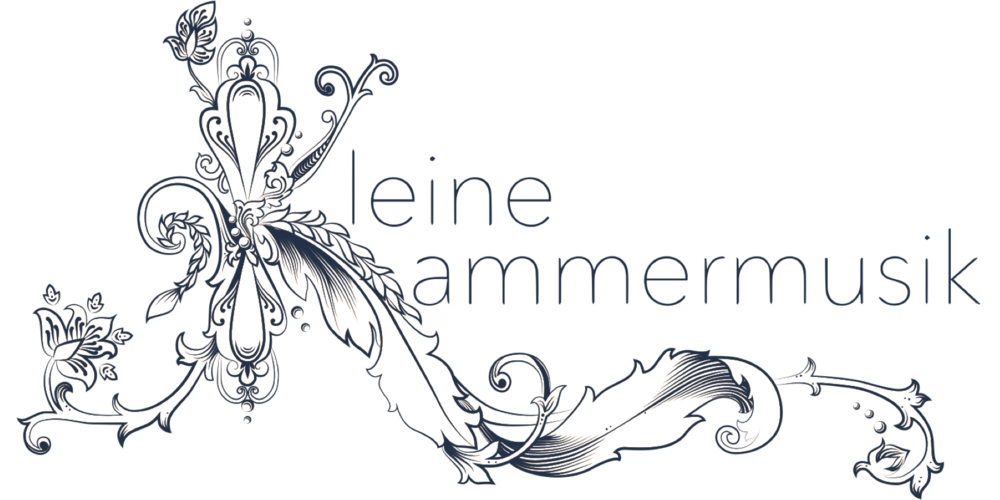Musicians are constantly reminded that dance is at the heart of baroque music, but we only rarely have the opportunity to probe the significance of that commonplace. Our concert on Monday 22nd October was an exception. Even before rehearsals started just four days prior, there was little doubt that the combination of the Polish ensemble Il Giardino d’amore (two violins and lute) filled out with the two oboes, bassoon, cello and harpsichord of Kleine Kammermusik, with the master of French dance Hubert Hazebroucq, would be electric. To many of the audience members it seemed that we drew from extensive periods of collaboration and rehearsal, but we only had four days to quickly learn to read each other’s cues, and with Stefan Plewniak’s clear leadership, there was never a question of the direction the music was taking.
La folia rehearsal
In a show like this, the dancer is definitely the star. Hubert presented a panoply of dances of diverse characters from the noble elegance of a minuet, to the grotesqueries of peasants and lumbering sailor dances, and the dizzying virtuosity of Apollo’s arrival to evocative Spanish dances all of which he performed to music by Couperin, Lully, and their contemporaries, with a dose of Italians—Vivaldi and Uccellini—thrown in for good measure. The final medley performed over Vivaldi’s astounding Folia variations required consummate technique from the two violins and continuo, and served as the canvas on which Hubert applied in bold strokes the image of a seductive señorita to a vivid portrait of masculine gallantry.
Not only was this an occasion to make Baroque music come to life in dance, but to support a remarkable virtuoso. Known as one of the most knowledgeable interpreters of Baroque dance, Hubert Hazebroucq is not only an amazingly technically gifted dancer, but is capable of bringing personality and passion to his art. With just a slight inclination of the torso, or a shift from gentle motion to taught leaps, he can change the experience from grace and elegance to unbridled passion or bravura.
For musicians, setting the right tempo is the primary concern when accompanying dance. But it is also important to consider energizing the music with a knowledge of the steps. Seeing how small inflections in our playing could influence the spirit of the dance was the next level in the fusion of aural and visual music play.
The continuo section
My task was to come up with a musical program that would elaborate five themes—Noble Characters, La belle danse, From Demi-Character to the Comic, In Majestic Step, and Where the Characters Mingle. I chose complementary pieces from well-known operas like Lully’s Atys and Rameau’s Indes galantes. If this had been a true opera-ballet, all of the music would have been danced by different performers in sequence, but with just one dancer, our instrumental interludes served as virtual dance. To the casual observer, Hubert’s energy never flagged; trained dancers would understand how strenuous these dances are, and what physical demands they place on the body. A lone performer could not be expected to dance more than a few minutes of these demanding works; our instrumental interludes gave Hubert a few moments of respite and time for costume changes. Chameleon-like, Hubert morphed from courtier to female ballerina, and from crude peasant to the pinnacle of theatrical masculine prowess, before concluding as swashbuckling Spaniard.
Two weeks before this concert I had played for another event in New York City integrating dance and Baroque music. The difference could not have been greater. Firstly, the New York event involved music that was not intended for dance: all six of Bach’s Brandenburg Concertos. Secondly it involved the Rosas Dance Company from Belgium, a 16-person troupe and completely modern choreography by Anna Teresa de Keersmaeker. Revelatory and elating as it was, Keersmaeker’s choreography followed the rhythmic shapes of Bach’s score to the letter. She had the dances sometimes walking, sometimes running, sometimes cascading in somersaults, but whatever their mode of travel, always with a neutral expression that put the emphasis on the dancers’ bodies dressed in stark black. This emphasized the emotional distance to the conceptual purity of the music and the physical distance of dancers, musicians and audience in the vast space of the Park St Armory.
The ensemble takes a break to make use of all the wonderful masks
—Geoffrey Burgess




